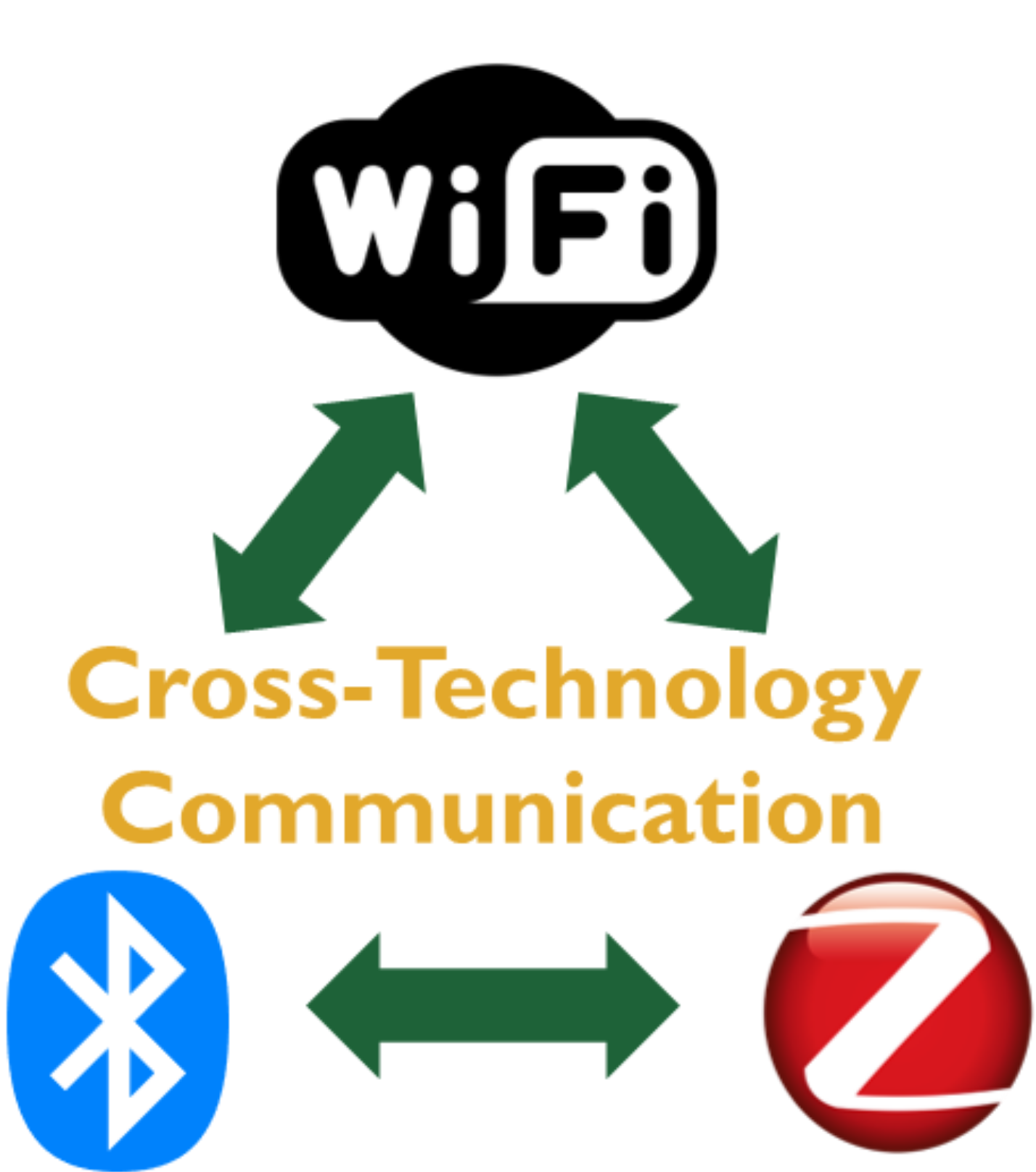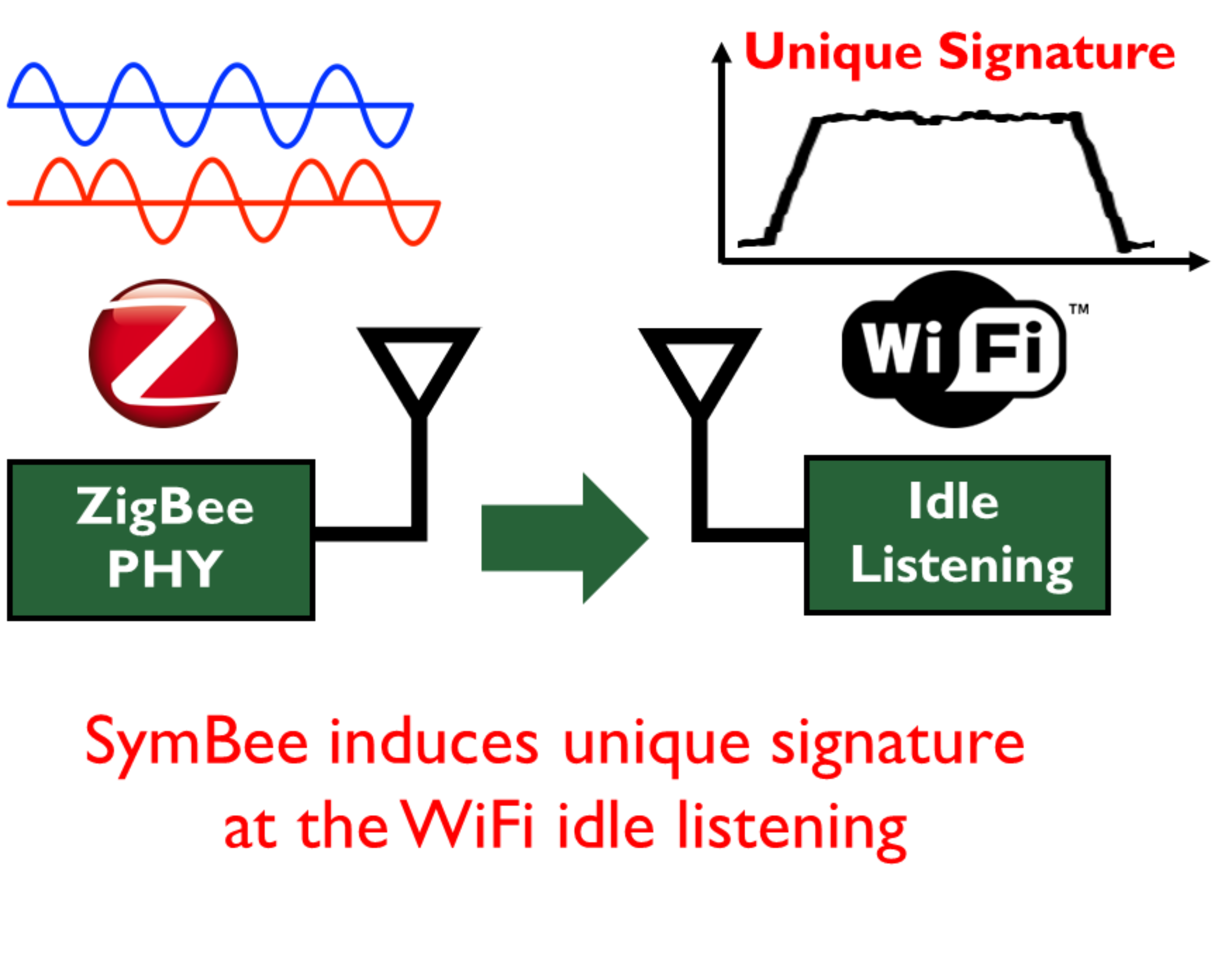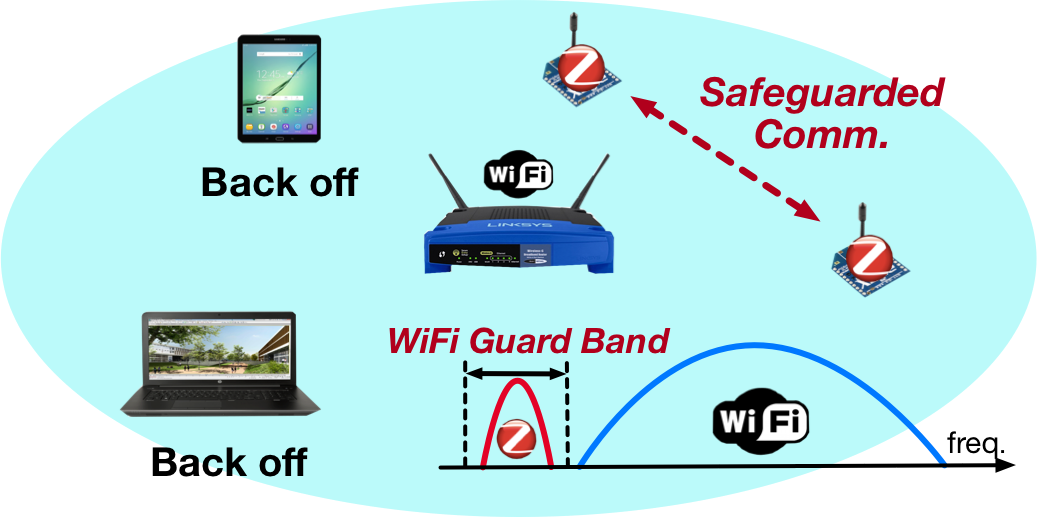

Transparent Cross-technology
Communication in Wireless Networks
NSF CNS-1717059
 |
SDR-Lite: SDR Receiver Using Commodity WiFi via Physical-Layer Signal ReconstructionWe introduced SDR-Lite, the first zero-cost, software-only software defined radio (SDR) receiver that empowers commodity WiFi to retrieve the In-phase and Quadrature of an ambient signal. With the full compatibility to pervasively-deployed WiFi infrastructure, SDR-Lite aims to spread the blessing of SDR receiver functionalities to billions of WiFi users and households to enhance our everyday lives. The key idea of SDR-Lite is to trick WiFi to begin packet reception (i.e., the decoding process) when the packet is absent, so that it accepts ambient signals in the air and outputs corresponding bits. The bits are then reconstructed to the original physical-layer waveform, on which diverse SDR applications are performed. We extensively demonstrate SDR-Lite effectiveness across seven distinctive SDR receiver applications under three representative categories: (i) RF fingerprinting, (ii) spectrum monitoring, and (iii) (ZigBee) decoding. For instance, in security applications of drone and rogue WiFi AP detection, SDR-Lite achieves 99% and 97% accuraciesm which is comparible to USRP. SDR-Lite is published at MobiCom 2020.[PDF] |
 |
SymBee: Symbol-level Cross-technology Communication via Payload EncodingOur work of SymBee aims at enabling CTC among wireless technologies with significant bandwidth asymmetry, where an example would be ZigBee (2MHz) to WiFi (20MHz). To tackle this, SymBee achieves CTC by exploiting the preamble detection function globally found across any wireless system. Specifically, SymBee assembles combinations of ZigBee symbols such that it yields a special output pattern at the WiFi Idle Listening (preamble detection). SymBee is optimized to maximize detectability, or equivalently, CTC reliability. SymBee, like other designs, ensures full compatibility to the offtheshelf ZigBee device and WiFi standard. Furthermore, since WiFi preamble detection continuously runs by default (to detect any incoming WiFi packets), recycling its output amortizes much of the computational cost and enables lightweight decoding. This keeps the overhead and disruption to the legacy communication minimal. SymBee is extensively evaluated both theoretically and experimentally through extensive testbed evaluations on six distinct indoor/outdoor locations under various degree of interference and noise. SymBee reaches the throughput of up to 31.25kbps, 145.4x faster than the packetlevel counterpart. SymBee is arawded as best paper and published at ICDCS 2018.[PDF] |
 |
G-Bee: Exploiting WiFi Guard Band for Safeguarded ZigBeeCross-technology interference (CTI) from dense and prevalent wireless has become a primary threat to low-power IoT. Our work of G-Bee, a CTI avoidance technique that uniquely places ZigBee packet on the guard band of ongoing WiFi traffic, effectively safeguards the packet from WiFi interference. Such design ensures reliable ZigBee communication even under saturated WiFi traffic where traditional ZigBee is considered inoperable. Technical highlight is in lighweight WiFi guard band capture mechanism using ZigBee PHY layer samples directly accessible in various commercial ZigBee chip. Specifically, we leverage the Narrowband Decoding, where 1Mbps 802.11b signal is decodable at 2MHz-bandwidth receiver, and Ultra-light Weight Synchronization to detect WiFi guardband. Another exclusive feature of G-Bee is spectrum-synchronized low duty cycling – by utilizing guard bands of periodic WiFi beacons, active slots are effectively synchronized to spectrum availability (i.e., guard band) for significant delay improvement. Extensive evaluations on our prototype system demonstrates G-Bee PRR over 95% where legacy ZigBee drops to below 15% under significant interference with hundreds WiFi users and reduction of low duty cycle delay by 87.5%, all of which are achieved with a light computational overhead of 0.3%. G-Be is published at SenSys 2018.[PDF] |